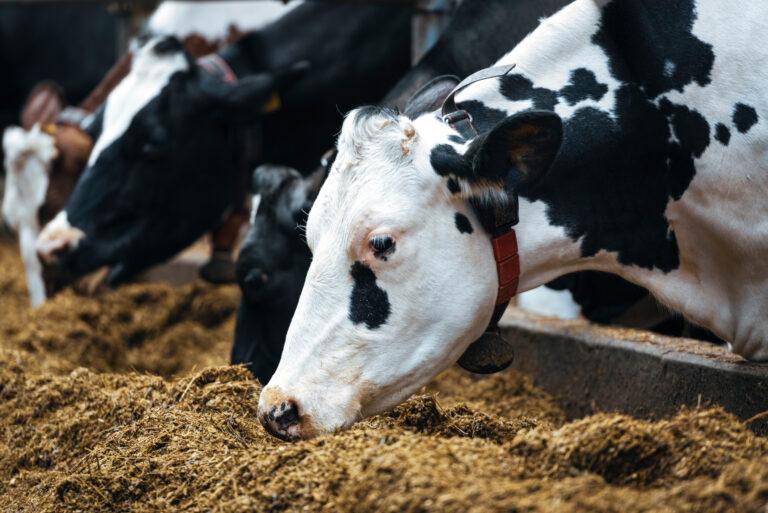Methane from cattle burps and manure is a major contributor to greenhouse gas emissions; globally, cows and other farm animals are responsible for about 14% of human-induced climate emissions.
It is imperative to develop economical tactics that curtail the loss of feed energy through CH4 emissions in the digestive system, all the while enhancing the efficiency of ruminant production. The strategies for reducing methane should be ecologically sound, uncomplicated for farmers to integrate, and embraced by consumers. Nevertheless, the options for sustainable mitigation of CH4 remain limited at present.
Researchers are studying the effects of different feed additives and supplements that can be included in the diet of dairy cattle. For example, compounds like fats, oils, tannins, and specific types of seaweed have been shown to potentially reduce methane emissions by altering the digestion process in the stomach and decreasing the activity of methane-producing microbes.
One of the possible ways to limit methane emissions from cows is by feeding them the seaweed Asparagopsis taxiformis. This seaweed contains high concentrations of bromoform, a substance that counteracts the formation of methane in the cow's rumen. Research shows that bromoform can end up in the milk and urine of the cow. Bromoform in its pure form is harmful to health. There are limits for the maximum amount of bromoform in drinking water but no such limits for food. The researchers call it worrying that the substance can be found in the milk.
There have been several laboratory (in vitro) studies and also some in vivo trials testing the efficacy of Asparagopsis for enteric methane reduction. All identified in vivo studies reported a significant reduction in methane yield for at least one dosage level. The average observed reduction in enteric methane emissions from beef cattle was 56.0 ± 9.4%, for dairy cattle 22.2 ± 9.75%, and for sheep 53.0 ± 13.78%. However, due to the small number of in vivo studies, these reductions are associated with wide 95% confidence intervals (beef: 37.6 to 74.3%; dairy 3.1 to 41.3%; sheep 26.0 to 80.0%). Mean inclusion rates of seaweed in these studies were 0.59 ± 0.19% feed organic matter (OM), ranging from 0.05 to 3% OM, with significant reductions in methane yield found at dosages as low as 0.1% OM in dairy cows and beef cattle.
A publication from The Netherlands has questioned the safety of bromoform for the animal. They examined the organs of two dairy cows slaughtered after receiving 67g of A. taxiformis per day for 22 days and found inflammation of the rumen wall and loss of papillae. They also detected bromoform in milk, but this was not consistently across the experimental period. The concentration of this compound in livestock diets is not currently regulated.
There might be other problems with seaweed additives, such as the bioaccumulation of heavy metals, especially arsenic, lead and iodine. Studies showed that their level will vary dependent on the type, species and environmental conditions the seaweed was produced under. Publications have concentrated on transfer of iodine from the animal to products for human consumption (particularly milk). However, high levels of iodine consumption by the animal can cause toxicity, leading to nasal and lacrimal discharge, coughing, pneumonia and skin irritation. Another study provided baseline knowledge of microbial dynamics in response to seaweed feeding over an extended period and suggests that feeding A. taxiformis to cattle to reduce methane may directly, or indirectly, inhibit important fiber-degrading and VFA-producing bacteria.
The production of A. taxiformis is also challenging, since the life cycle of the seaweed is complex. It is important to solve these challenges in order to produce a cost-effective feed additive at the end.
Certain compounds can inhibit the activity of methane-producing microbes in the cow's stomach. Compounds like 3-NOP (3-nitrooxypropanol) have shown promise in reducing methane emissions while not significantly affecting the animal's overall health and productivity. EFSA has already approved one product containing 3-NOP for dairy cows.
New Zealand scientists are exploring innovative approaches to mitigate greenhouse gas emissions, particularly methane, originating from farm animals. These strategies include selective breeding, genetically modified feed, methane inhibitors, and even the potential use of a vaccine. The country's commitment to becoming carbon neutral by 2050 has intensified the urgency of these efforts, as approximately 50% of New Zealand's greenhouse gas emissions stem from its agricultural sector. Despite resistance from some farmers, the research aims to find solutions that do not compromise animal health or product quality. Scientists are focusing on genetically modifying ryegrass and white clover to reduce methane production, and promising results have been achieved with modified clover, which exhibited a 15-19% decrease in methane. While some methods are still in the experimental stage, selective breeding and feed modifications are set to be introduced on sheep farms soon. The overall goal is to lessen the environmental impact of farming while maintaining productivity.
The UK is also considering the option of authorizing methane blockers in order to achieve the country’s climate goals.
We don’t know enough yet about the impact these products will have on the efficiency of the diet. Before licensing them for use in feed to reduce methane, robust risk assessments have to be carried out to estimate the impacts of each additive on animal health and welfare, food safety risks, risk to workers, wider environmental risks, and of the efficacy of the products.
It's important to note that while many of these strategies show promise, there is no one-size-fits-all solution. The effectiveness of these methods can vary based on factors such as diet, genetics, management practices, and regional differences. As research progresses, a combination of these approaches may be necessary to achieve significant reductions in methane emissions from dairy cattle.

